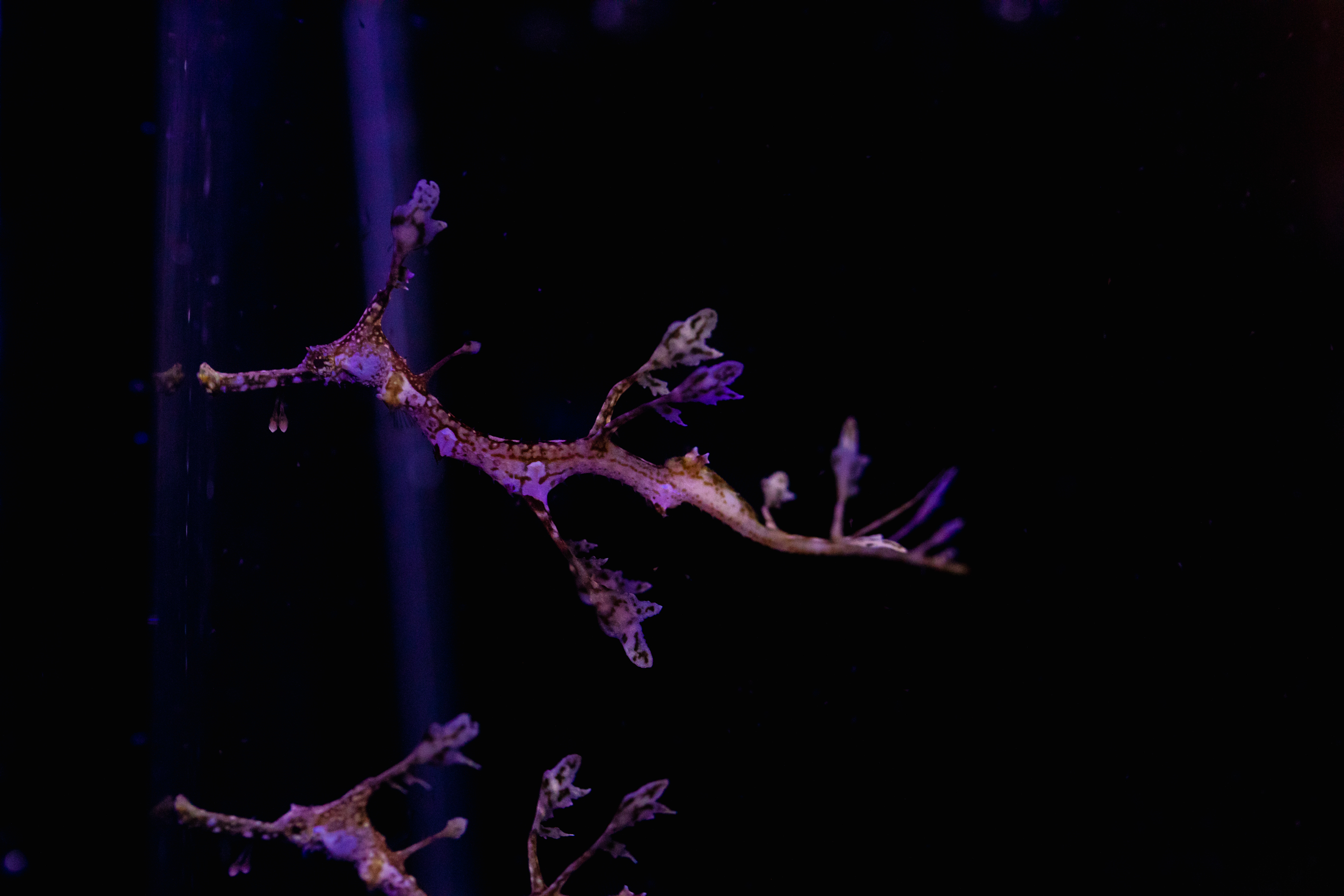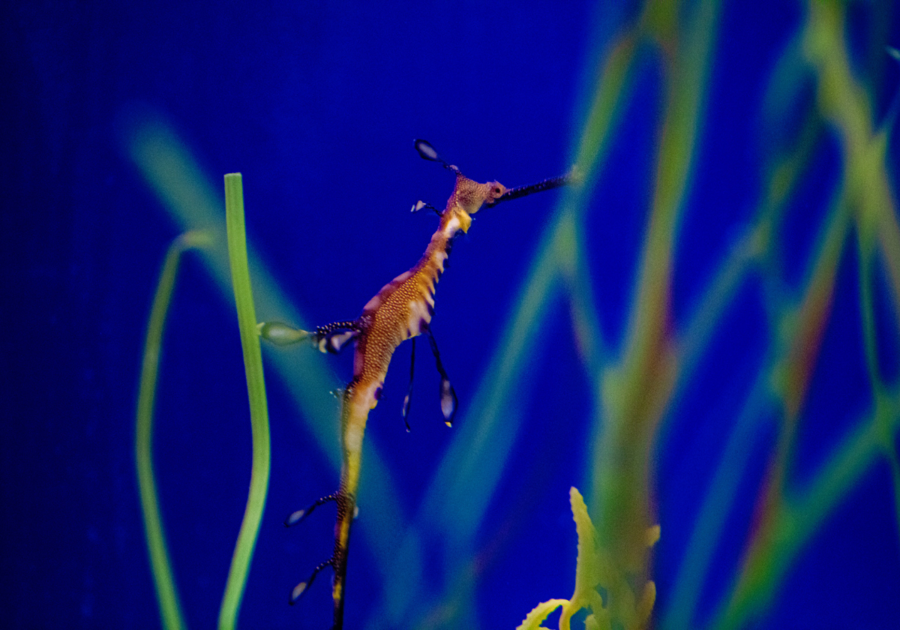The Birch Aquarium Is Celebrating The Baby Weedy Seadragons’ First Birthdays!
Celebration includes launch of a live Seadragon Cam, online store, and a live talk with seadragon curator.
It's been one year since two Weedy Seadragons were hatched at Birch Aquarium at Scripps Institution of Oceanography, UC San Diego. In honor of the thriving babies, Birch Aquarium is celebrating by launching a live Seadragon Cam, hosting a Facebook Live chat with the head of the seadragon program, and launching an exclusive collection of Weedy Seadragon merchandise in a new online store.
The babies, born on February 11 and 12, were less than one-inch at birth and are now nearly 9 inches long. The births marked the first time Birch Aquarium bred Weedy Seadragons, becoming one of the few aquariums in the world to have hatched these unusual fish.
“We have been working with seadragons since 1996. Since then, we have learned so much about caring for these very fascinating fish,” said Associate Curator Leslee Matsushige, who heads the aquarium’s Seadragon Conservation Program. “It has been very exciting to have successfully hatched baby weedy seadragons and have them continuing to thrive. We look forward to watching them grow into mature adults, and join others in our collection to potentially breed and produce more baby seadragons.”
Seadragon Birthday Celebrations:
- The babies have been behind-the-scenes since birth, but are now large enough to be added in with the other seadragons. They are now in the main habitat in the Seadragons & Seahorses exhibition.
- Though Birch Aquarium remains closed to the public, people can now view the baby Weedy Seadragons, along with several others, live 24/7 on the brand new Seadragon Cam. Tune in to the feed, which is hosted by HDOnTap, to see how many Weedy Seadragons you can spot as they camouflage themselves in the seaweed.

- On Friday, February 12 at 11 a.m., Birch Aquarium is hosting a Facebook Live chat with Associate Curator Leslee Matsushigee, who heads the aquarium’s Seadragon Conservation Program. Playfully referred to as the “mother of dragons,” Join us for a 30-minute discussion about what it’s like caring for these rare creatures. Be prepared with your burning seadragon questions, as there will be a Q&A.
- For the first time ever, Birch Aquarium Gift Shop is going digital with an exclusive capsule collection of Weedy Seadragon merchandise. The limited-edition items are available online only for a short period of time. Proceeds from sales support the care and conservation of Birch Aquarium’s animals.
- Visit: https://kastlfel.com/collections/birch-aquarium-weedy-seadragon-collection
Facts About Seadragons
Weedy Seadragons are native to southern Australia and Birch Aquarium has had a population on display, and as part of a behind-the-scenes breeding program since 2012. The Seadragon Breeding Program was created because of the aquarium’s success in breeding other seahorse, or signathid, species. Since 1995 Birch Aquarium has bred thirteen different seahorse species, sharing more than 5,000 captive-raised seahorses with other aquariums around the world.
Once listed as “near threatened” by the IUCN, International Union for the Conservation of Nature, the conservation status of Weedy Seadragons have been downgraded to “least concern” — partially because of the lack of population data. Their remote habitat along Australia’s rugged and underpopulated Southern Coast makes observation difficult. This isolation, combined with their expert camouflage, makes population counts challenging even for the most experienced seadragon-spotters.
Seadragons and seahorses face challenges in the wild: climate change, warming ocean, compromised habitats, destructive fishing practices like bottom trawling, and unsustainable collection practices for home aquariums and traditional medicine. Captive breeding programs, like that at Birch Aquarium, alleviates pressure on wild populations and contributes to Species Survival Plans (SSPs), as outlined by The Association of Zoos and Aquariums.
Birch Aquarium remains temporarily closed to the public. For more information, visit aquarium.ucsd.edu or call 858.534.FISH. Reopening details will be announced soon.



